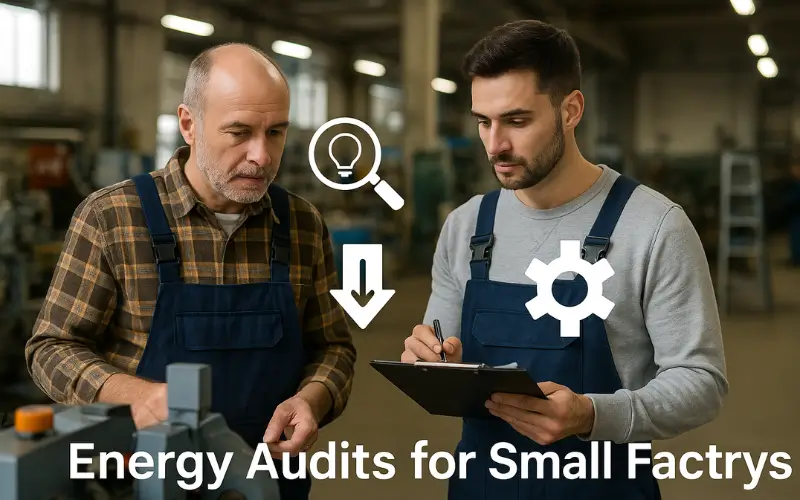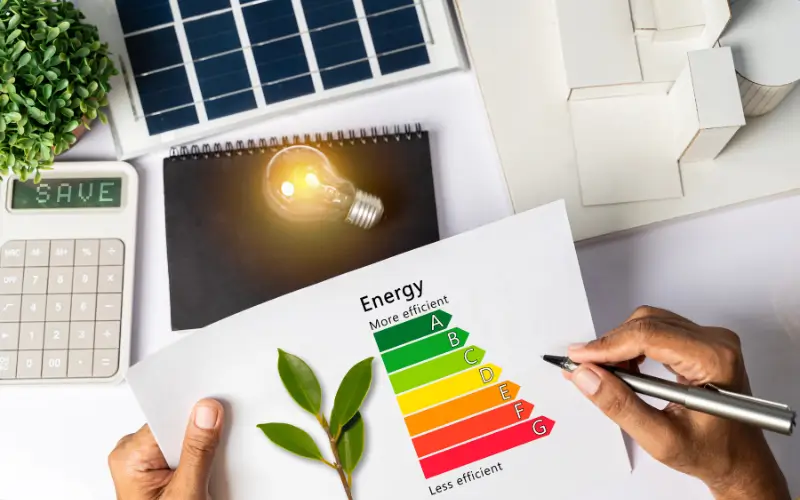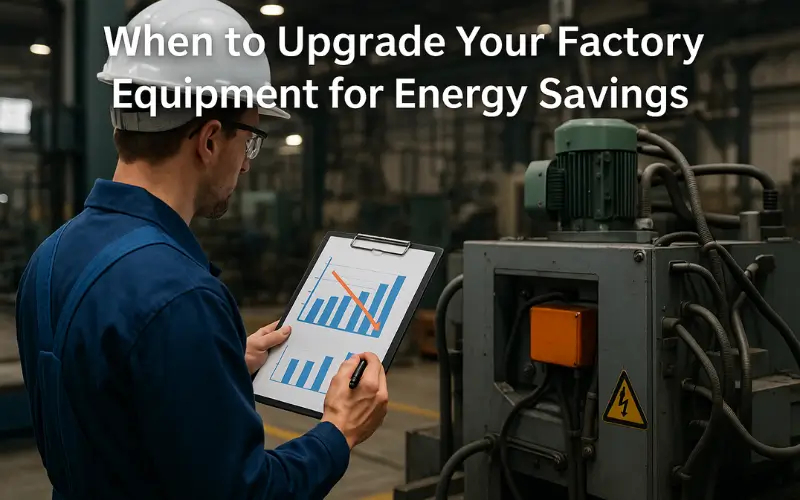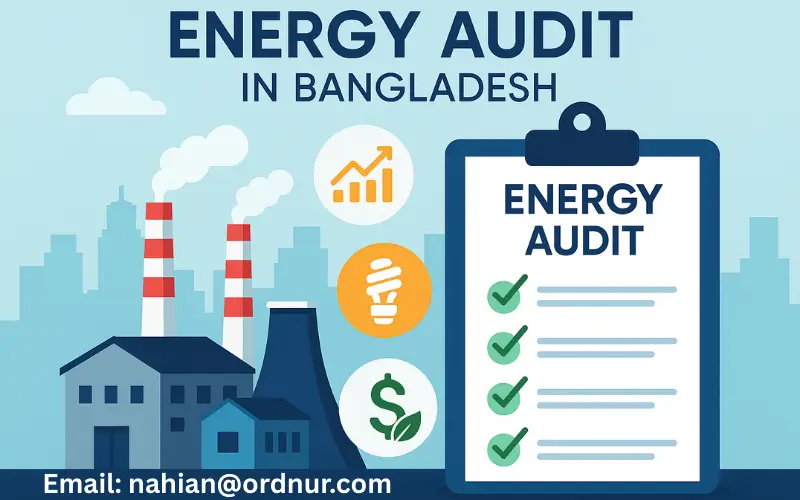Rising energy costs are a growing concern for small factories around the world. Every kilowatt-hour wasted translates into higher expenses, reduced profits, and an increased environmental footprint. Yet, many small business owners assume energy audits are only for large corporations, overlooking the powerful benefits they can bring to smaller operations.
An energy audit for a small factory is a systematic evaluation of how your facility consumes energy and identifies opportunities to reduce waste. From inefficient lighting and outdated machinery to air leaks and HVAC inefficiencies, even minor improvements can lead to substantial savings over time. Beyond cost reduction, energy audits enhance operational efficiency, ensure regulatory compliance, and contribute to a greener, more sustainable manufacturing process.
In this comprehensive guide, we’ll explore how small factories can leverage energy audits, real-world success stories, and practical steps to get started—helping you determine if an energy audit is truly worth the investment for your factory.
What Is an Energy Audit?
An energy audit is a comprehensive assessment of how a facility uses energy, identifying areas where energy consumption can be reduced and efficiency improved. For small factories, it’s a strategic tool to cut costs, enhance operations, and contribute to sustainability without compromising productivity.
Audit Levels
Energy audits are typically classified into three levels, each offering increasing depth and detail:
Level 1 – Walk-Through Audit
- A basic assessment involving a visual inspection of the facility.
- Reviews utility bills and identifies obvious energy wastage.
- Provides preliminary recommendations, such as replacing inefficient lighting or fixing air leaks.
Ideal for: small factories exploring energy-saving options with minimal investment.
Level 2 – Detailed Energy Audit
- Involves detailed data collection and energy usage analysis.
- Identifies specific inefficiencies in equipment, processes, and systems.
- Provides cost-benefit analysis for recommended improvements.
Ideal for: Factories ready to make moderate investments for measurable savings.
Level 3 – Investment-Grade Audit
- A comprehensive, highly detailed analysis.
- Includes sophisticated energy modeling, life-cycle cost analysis, and precise financial projections.
- Often used to justify major investments in energy-efficient technologies.
- Ideal for: Factories planning significant upgrades or seeking external financing.
Tools and Methodologies
Energy auditors use various tools and methodologies to measure and analyze energy consumption:
- Utility Bill Analysis: Reviewing past bills to understand trends and identify peak usage.
- Energy Modeling Software: Simulating energy flow and potential savings scenarios.
- Equipment Monitoring: Using meters and sensors to track energy use of individual machines.
- ASHRAE Standards: Following protocols from the American Society of Heating, Refrigerating and Air-Conditioning Engineers for structured assessments.
- Thermal Imaging: Detecting heat loss in buildings and equipment for better insulation or maintenance decisions.
By understanding your factory’s energy profile through these audits, even small factories can identify cost-saving opportunities that often pay back in a matter of months.
Why Small Factories Should Consider Energy Audits
Small factories often operate on tight budgets, so investing time and money into energy audits might seem daunting. However, the benefits often far outweigh the costs. Here’s why energy audits are particularly valuable for small manufacturing operations:
Cost Savings
One of the most immediate and tangible benefits of an energy audit is reduced energy bills. Energy audits identify inefficiencies such as outdated lighting, poorly maintained machinery, or unnecessary standby loads. By addressing these issues:
- Factories can often reduce electricity, gas, and fuel consumption by 10–30%.
- Example: A small Turkish dairy factory reduced energy costs by 60% through optimized HVAC systems and upgraded equipment.
Even minor improvements, like switching to LED lighting or fixing compressed air leaks, can result in significant monthly savings.
Operational Efficiency
Energy audits do more than cut costs—they optimize operations:
- Equipment that runs efficiently reduces downtime and maintenance costs.
- Streamlined processes ensure machines operate at their intended capacity, improving productivity.
- Efficient energy use can extend the lifespan of machinery and reduce wear and tear.
By identifying energy wastage, factories often uncover broader operational inefficiencies.
Compliance and Incentives
Many governments and utility companies offer incentives, grants, or tax rebates for factories that implement energy-saving measures:
- Compliance with local energy regulations is often simplified after completing an energy audit.
- Factories may qualify for rebates for upgrading to energy-efficient motors, HVAC systems, or lighting.
- Some countries provide low-interest loans for implementing recommended energy efficiency measures.
Taking advantage of these incentives can drastically reduce the upfront cost of improvements.
Environmental Impact
Energy audits contribute to sustainability and corporate responsibility:
- Reducing energy consumption lowers the factory’s carbon footprint.
- Implementing efficient systems can significantly decrease greenhouse gas emissions.
- Sustainability improvements may enhance brand reputation and appeal to environmentally conscious clients or partners.
Even small factories can make a meaningful impact on environmental conservation while simultaneously improving profitability.
Common Energy Wastes in Small Factories
Energy inefficiencies can silently inflate costs in small factories. Identifying and addressing these common energy drains is a key outcome of an energy audit. Here’s what auditors typically look for:
Inefficient Lighting Systems
- Outdated fluorescent or incandescent lights consume more electricity than modern alternatives.
- Lighting often runs longer than necessary in areas with low occupancy.
- Solution: Upgrade to LED lighting, install motion sensors, and implement smart lighting schedules.
HVAC Inefficiencies
- Heating, ventilation, and air conditioning (HVAC) systems are often major energy consumers.
- Common issues include poorly maintained units, outdated thermostats, and inefficient ductwork.
- Solution: Regular maintenance, programmable thermostats, and energy-efficient HVAC units can reduce consumption significantly.
Compressed Air Leaks
- Compressed air systems, if not properly maintained, can leak and waste substantial energy.
- Small leaks often go unnoticed but cumulatively contribute to high electricity bills.
- Solution: Routine inspection, leak detection, and proper maintenance schedules.
Motor and Pump Inefficiencies
- Motors and pumps are critical to production but can be energy hogs if oversized or poorly maintained.
- Worn bearings, misaligned shafts, or outdated models increase energy usage.
- Solution: Replace old motors with high-efficiency models and ensure proper maintenance.
Building Envelope Issues
- Poor insulation, gaps, and air leaks in walls, windows, or doors lead to energy loss.
- Factories may overheat or overcool spaces to compensate, increasing energy consumption.
- Solution: Seal gaps, improve insulation, and consider energy-efficient windows and doors.
By addressing these common energy drains, small factories can achieve measurable cost savings and operational improvements. Energy audits highlight these issues and provide a roadmap for corrective action.
Real-World Case Studies
Energy audits aren’t just theoretical—they deliver measurable results. Small factories across different industries have successfully implemented audit recommendations to reduce costs, improve efficiency, and enhance sustainability. Here are some illustrative examples:
Case Study 1 – Lighting and HVAC Optimization
- Background: A small manufacturing factory faced high electricity bills due to outdated fluorescent lighting and an inefficient HVAC system.
- Actions Taken: The factory conducted a Level 2 energy audit, identifying overconsumption in lighting and heating/cooling systems. Recommendations included switching to LED lighting, installing programmable thermostats, and sealing HVAC duct leaks.
- Results: Energy costs dropped by approximately 30%, with the lighting upgrade paying for itself within 12 months. Employee comfort and productivity also improved due to better temperature regulation.
Case Study 2 – Motor and Equipment Efficiency
- Background: A small machine shop had several aging motors and pumps running continuously, consuming excessive energy.
- Actions Taken: The energy audit identified oversized motors and worn bearings causing energy wastage. Recommendations included replacing motors with high-efficiency models, scheduling regular maintenance, and installing variable frequency drives (VFDs) for better control.
- Results: Electricity consumption dropped by 25%, maintenance costs decreased, and machine lifespan increased.
Case Study 3 – Leveraging Incentives
- Background: A small food processing factory wanted to implement energy-saving measures but had budget constraints.
- Actions Taken: The energy audit provided a prioritized list of improvements. The factory applied for government grants and utility rebates to fund the upgrades, including efficient lighting, improved insulation, and compressed air system optimization.
- Results: The upfront cost was significantly reduced due to incentives, and the factory achieved a 20–40% reduction in overall energy bills within the first year.
These real-world examples highlight that even small factories can achieve significant energy savings with the right guidance and action plan. An energy audit acts as the roadmap for cost-effective improvements and long-term efficiency gains.
How to Conduct an Energy Audit in Your Factory
Conducting an energy audit may seem daunting for small factories, but with a systematic approach, it becomes a manageable and highly beneficial process. Here’s a step-by-step guide:
Step 1 – Preparation
- Gather Utility Bills: Collect at least 12 months of electricity, gas, and other energy bills to understand consumption patterns.
- Review Equipment and Processes: List all major machinery, HVAC systems, lighting, and production processes.
- Set Goals: Define what you want to achieve—cost reduction, improved efficiency, or sustainability compliance.
Step 2 – Choosing an Auditor
- Qualifications: Look for certified energy auditors with experience in small manufacturing facilities.
- References and Case Studies: Check past projects and client feedback.
- Scope of Services: Ensure the auditor offers a clear audit level (Level 1, 2, or 3) suited to your factory size and needs.
Step 3 – The Audit Process
- Site Walk-Through: The auditor inspects the facility, identifying obvious energy wastage and operational inefficiencies.
- Data Collection: Use meters, sensors, and energy modeling software to monitor machinery, HVAC systems, lighting, and other significant loads.
- Analysis: The auditor evaluates collected data to pinpoint energy inefficiencies and prioritize improvement opportunities.
- Report Generation: A detailed audit report outlines recommendations, estimated savings, payback periods, and investment costs.
Step 4 – Post-Audit Actions
- Implement Recommendations: Start with high-impact, low-cost measures for quick wins.
- Track Results: Monitor energy consumption to verify improvements.
- Continuous Improvement: Schedule periodic audits to maintain efficiency and adapt to changing production needs.
By following these steps, small factories can systematically identify energy-saving opportunities and maximize ROI from energy audits.
Overcoming Common Challenges
While energy audits offer significant benefits, small factories often face obstacles when implementing them. Understanding these challenges and strategies to overcome them can make the process smoother and more effective.
Budget Constraints
Challenge: Many small factories worry about the upfront cost of audits and energy efficiency upgrades.
Solutions:
- Prioritize low-cost, high-impact measures first, such as LED lighting or sealing air leaks.
- Explore government grants, utility rebates, and low-interest financing options for energy efficiency projects.
- Conduct audits in phases to spread costs over time.
Resistance to Change
Challenge: Employees or management may be hesitant to adopt new practices or technologies.
Solutions:
- Clearly communicate the financial and operational benefits of the recommended changes.
- Provide training sessions and demonstrations to build confidence.
- Highlight success stories from similar factories to encourage buy-in.
Technical Limitations
Challenge: Older factories may have outdated infrastructure or machinery that limits efficiency improvements.
Solutions:
- Focus on achievable improvements, such as process optimization, maintenance, and operational adjustments.
- Plan for gradual upgrades of critical equipment when budgets allow.
- Consider energy-efficient retrofits compatible with existing systems.
By proactively addressing these challenges, small factories can successfully implement audit recommendations, maximize energy savings, and enhance overall productivity.
The ROI of Energy Audits for Small Factories
Investing in an energy audit is not just about reducing bills—it’s a strategic decision that can provide significant returns over time. Understanding the return on investment (ROI) helps small factory owners make informed choices.
Payback Period
The payback period is the time it takes for the energy savings to cover the cost of the audit and subsequent improvements.
For small factories:
- Quick wins (e.g., lighting upgrades, sealing air leaks) often have a payback period of 6–12 months.
- Moderate investments (e.g., HVAC optimization, motor upgrades) typically pay back in 1–3 years.
- Short payback periods make energy audits a financially attractive option, even for factories with limited budgets.
Long-Term Savings
Beyond the initial payback, energy-efficient upgrades continue to reduce operating costs over years.
Factories can expect:
- 10–30% reduction in annual energy bills.
- Lower maintenance costs due to optimized and well-maintained equipment.
- Extended machinery lifespan from reduced operational strain.
Intangible Benefits
- Enhanced Brand Reputation: Demonstrating a commitment to sustainability can attract clients and partners.
- Employee Satisfaction: Comfortable, well-lit, and efficiently run facilities improve working conditions.
- Regulatory Compliance: Proactively addressing energy efficiency supports adherence to local regulations and standards, reducing potential penalties.
By quantifying both tangible and intangible benefits, small factories can see that energy audits are not just an expense—they are an investment in profitability, efficiency, and sustainability.
Conclusion
Energy audits offer small factories a clear path to reducing costs, improving operational efficiency, and contributing to a greener, more sustainable future. Through systematic assessment, audits uncover hidden energy wastage—from inefficient lighting and HVAC systems to outdated motors and building envelope issues—and provide actionable recommendations tailored to your facility.
Real-world case studies demonstrate that even small factories can achieve significant energy savings, sometimes reducing bills by 20–60%, while also benefiting from incentives, grants, and improved operational performance. By overcoming common challenges like budget constraints, resistance to change, and technical limitations, small factories can implement audit recommendations effectively and see a measurable return on investment in a relatively short period.
Ultimately, investing in an energy audit for a small factory is more than a cost-saving measure—it’s a strategic decision that enhances profitability, sustainability, and competitiveness. If your factory hasn’t yet explored energy efficiency, now is the time to consider scheduling an audit and start reaping the benefits.
FAQs: Energy Audits for Small Factories
1. What is the average cost of an energy audit for a small factory?
The cost varies depending on the audit level and factory size. A basic walk-through (Level 1) may cost a few hundred dollars, while a detailed investment-grade audit (Level 3) can run several thousand. Grants, rebates, and phased implementation can help manage costs.
2. How long does it take to see savings after implementing audit recommendations?
Many factories start seeing measurable energy savings within 3–6 months, especially from quick wins like LED lighting upgrades or HVAC adjustments. More extensive improvements may take 12–24 months to reach full potential savings.
3. Are there government grants or incentives available for energy efficiency improvements?
Yes. Many local and national governments, as well as utility companies, offer grants, rebates, or low-interest financing to help small factories implement energy-efficient solutions. These incentives can significantly reduce the upfront cost.
4. Can energy audits help in achieving ISO 50001 certification?
Absolutely. ISO 50001 focuses on energy management systems. An energy audit provides a clear baseline, identifies inefficiencies, and helps document improvements—key requirements for ISO 50001 compliance.
5. What are the first steps to take after receiving an energy audit report?
- Prioritize recommendations based on cost, savings, and feasibility.
- Implement high-impact, low-cost measures first.
- Monitor energy usage to track improvements.
- Plan for longer-term upgrades as budgets and resources allow.




